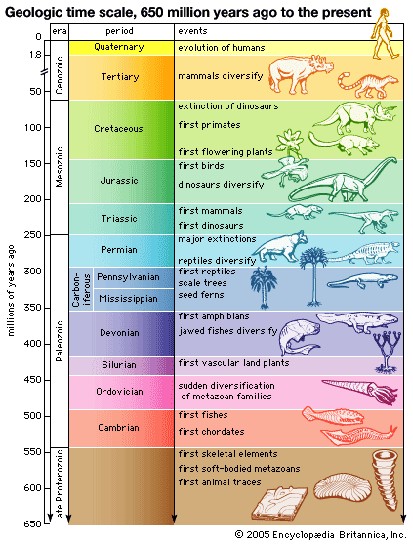Geosociety Gsa
The GSA headquarters building in Boulder, Colorado, USA. | |
| Abbreviation | GSA |
|---|---|
| Motto | Science, Stewardship, Service |
| Formation | 1888; 132 years ago |
| Type | Scientific society |
| Legal status | Non-profit 501c(3) |
| Headquarters | Boulder, Colorado, United States |
| Coordinates | 40°02′14.1″N105°14′59.8″W / 40.037250°N 105.249944°WCoordinates: 40°02′14.1″N105°14′59.8″W / 40.037250°N 105.249944°W |
| Worldwide | |
| Website | www.geosociety.org |
Sarah Crump, while a Ph.D. Student at the University of Colorado, Boulder, received a GSA Research Grant for her proposal: “Arctic ecosystems in a warmer world: Reconstructing past vegetation. The GSA Foundation manages more than 100 funds that support GSA Programs, Divisions, Sections, and Specialized Research Grants and Awards. Income generated by these permanently and professionally managed restricted endowments support donor-designated, specific purposes in perpetuity.
The Geological Society of America (GSA) is a nonprofit organization dedicated to the advancement of the geosciences.
History[edit]
The society was founded in Ithaca, New York, in 1888 by Alexander Winchell, John J. Stevenson, Charles H. Hitchcock, John R. Procter and Edward Orton[1] and has been headquartered at 3300 Penrose Place, Boulder, Colorado, USA, since 1967.[2]
You explore the depths while avoiding pointy blower fish and angry squids, all in the search for money and treasure.  This mini-game plays out much like a 2D side-scrolling game, something like a simplified.
This mini-game plays out much like a 2D side-scrolling game, something like a simplified.
GSA began with 100 members under its first president, James Hall. In 1889 Mary Emilie Holmes became its first female member.[3] It grew slowly but steadily to 600 members until 1931, when a nearly $4 million endowment from 1930 president R. A. F. Penrose Jr. jumpstarted GSA's growth. As of December 2017, GSA had more than 25,000 members in over 100 countries.
The society has six regional sections in North America, three interdisciplinary interest groups, and eighteen specialty divisions.[4]
Activities[edit]
The stated mission of GSA is 'to advance geoscience research and discovery, service to society, stewardship of Earth, and the geosciences profession'. Its main activities are sponsoring scientific meetings and publishing scientific literature, particularly the peer-reviewed journals Geological Society of America Bulletin, published continuously since 1889, and Geology, published since 1973. The Bulletin's impact factor was 4.219 in 2018/2019 (published in 2020).[5] In 2005, GSA introduced its online-only journal Geosphere, and in February 2009, GSA began publishing Lithosphere (both also peer-reviewed). Geosphere and Lithosphere are open access as of 2018. GSA's monthly news and science magazine, GSA Today,[6] is also open access online. GSA also publishes three book series: Special Papers, Memoirs, and Field Guides.[7] A third major activity is awarding research grants to graduate students.[8]
Position statements[edit]
GSA issues Position Statements 'in support of and consistent with the GSA's Vision and Mission to develop consensus on significant professional, technical, and societal issues of relevance to the geosciences community. Position Statements, developed and adopted through a well-defined process, provide the basis for statements made on behalf of the GSA before government bodies and agencies and communicated to the media and the general public.'[9]
For example, in 2006, the GSA adopted a Position Statement on Global Climate Change:
- The Geological Society of America (GSA) supports the scientific conclusions that Earth’s climate is changing; the climate changes are due in part to human activities; and the probable consequences of the climate changes will be significant and blind to geopolitical boundaries. Furthermore, the potential implications of global climate change and the time scale over which such changes will likely occur require active, effective, long-term planning.
- Current predictions of the consequences of global climate change include: (1) rising sea level, (2) significant alteration of global and regional climatic patterns with an impact on water availability, (3) fundamental changes in global temperature distribution, (4) melting of polar ice, and (5) major changes in the distribution of plant and animal species. While the precise magnitude and rate of climate change cannot be predicted with absolute certainty, significant change will affect the planet and stress its inhabitants.[10]
Past presidents[edit]
Past presidents of the Geological Society of America:[11]
|
|
|
|
See also[edit]
References[edit]
- ^Editor (August 26, 1938) 'The Semi-Centennial Meeting of the Geological Society of America' Science (New Series) 88(2278): p. 183
- ^Eckel, Edwin, 1982, GSA Memoir 155, The Geological Society of America — Life History of a Learned Society, p. 79, ISBN0-8137-1155-X
- ^Edwin Butt Eckel (1982). The Geological Society of America: Life History of a Learned Society. Geological Society of America. p. 36. ISBN978-0-8137-1155-3.
- ^Editor, 2017, GSA Divisions: GSA Today, v. 27, no. 8, p. 21–24.
- ^https://www.scijournal.org/impact-factor-of-geol-soc-am-bull.shtml
- ^'GSA Today'. ISSN1052-5173.Cite journal requires
journal=(help) - ^'GSA Books - Process'.
- ^Eckel, Edwin, 1982, GSA Memoir 155, The Geological Society of America — Life History of a Learned Society, p. 121, ISBN0-8137-1155-X.
- ^GSA Position Statements
- ^Global Climate Change
- ^'GSA Leaders, Past & Present'. www.geosociety.org/. Retrieved December 29, 2018.
